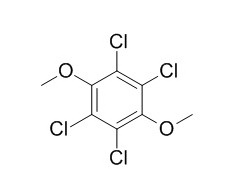Providing storage is as stated on the product vial and the vial is kept tightly sealed, the product can be stored for up to
24 months(2-8C).
Wherever possible, you should prepare and use solutions on the same day. However, if you need to make up stock solutions in advance, we recommend that you store the solution as aliquots in tightly sealed vials at -20C. Generally, these will be useable for up to two weeks. Before use, and prior to opening the vial we recommend that you allow your product to equilibrate to room temperature for at least 1 hour.
Need more advice on solubility, usage and handling? Please email to: service@chemfaces.com
The packaging of the product may have turned upside down during transportation, resulting in the natural compounds adhering to the neck or cap of the vial. take the vial out of its packaging and gently shake to let the compounds fall to the bottom of the vial. for liquid products, centrifuge at 200-500 RPM to gather the liquid at the bottom of the vial. try to avoid loss or contamination during handling.
Toxicological & Environmental Chemistry, 1986 , 11 (11) :37-50.
Acute toxicities of pentachlorophenol, pentachloroanisole, tetrachlorohydroquinone, tetrachlorocatechol, tetrachlororesorcinol, tetrachlorodimethoxybenzenes and tetrachlorobenzenediol diacetates administered to mice[Reference:
WebLink]
Pentachlorophenol (PCP), pentachloroanisole (PCAS), tetrachlorohydroquinone (TCH), tetrachlorocatechol (TCC), tetrachlororesorcinol (TCR), Tetrachlorohydroquinone dimethyl ether (TCH‐DME), tetrachlorocatechol dimethyl ether (TCC‐DME), tetrachlororesorcinol dimethyl ether (TCR‐DME), tetrachlorohydroquinone diacetate (TCH‐DA), tetrachlorocatechol diacetate (TCC‐DA), and tetrachlororesorcinol diacetate (TCR‐DA), were investigated for their acute toxicity in male (m) and female (f) mice.
METHODS AND RESULTS:
The substances were administered orally and intraperitoneally, respectively. The oral LD50 values were: 129±9 (m) and 134±9 (f) mg/kg for PCP, 318±22 (m) and 331±22 (f) mg/kg for PCAS, 318±22 (m) and 331±22 (f) mg/kg for TCC, 368±26 (m) and 383±26 (f) mg/kg for TCH, and 736±52 (m) and 767±51 (f) for TCR. The intraperitoneal LD50 values were: 59±4 (m) and 61±4 (f) mg/kg for PCP, 281 ±20 (m) and 293±20 (f) mg/kg for PCAS, 161±11 (m) and 167±11 (f) mg/kg for TCC, 28±2 (m) and 30±2 (f) mg/kg for TCH, and 351±25 (m) and 366±24 (f) mg/kg for TCR.
CONCLUSIONS:
No lethality was found with TCH‐DME, or TCC‐DME, or TCR‐DME, respectively, at oral or intraperitoneal single doses of about 300–400 mg/kg, as well as with TCH‐DA, or TCC‐DA, or TCR‐DA, respectively, at doses nearly 40–50 mg/kg, or 210–250 mg/kg, or 340–420 mg/kg b.wt., respectively (Table I).



